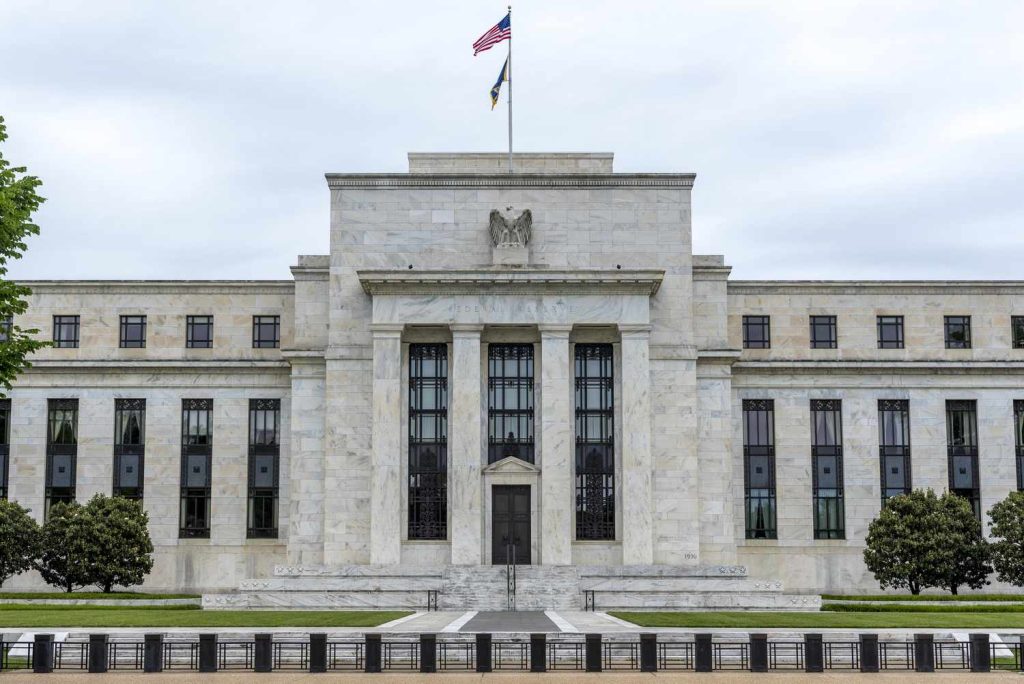Understanding the 2025 Macro Backdrop
As 2025 unfolds, the global economy finds itself at a precarious crossroads. While inflation has moderated in some regions, persistent price pressures, coupled with stagnating growth in key economies, have reignited discussions around stagflation—a scenario where inflation remains high while economic growth stalls. This economic duality presents a unique challenge for central banks, particularly the Federal Reserve, which remains caught between the need to anchor inflation expectations and the risk of tipping the economy into a deeper slowdown. Investors, meanwhile, are left navigating a volatile landscape, with asset correlations breaking down and traditional safe havens offering limited refuge. Amid these complex dynamics, adjusting portfolios to withstand prolonged stagflationary forces is no longer a theoretical exercise—it’s an essential strategy for capital preservation and growth.
The Federal Reserve’s Balancing Act
The Federal Reserve enters 2025 with a cautiously hawkish tone. Following a cycle of aggressive rate hikes between 2022 and 2023, the Fed paused increases in late 2024, holding the federal funds rate at 5.25%. This pause, however, has not signaled a pivot. Instead, the Fed has maintained a data-dependent approach, reiterating its commitment to price stability even as growth moderates. Core PCE inflation, the Fed’s preferred gauge, remains stuck around 3.2%, well above the 2% target. At the same time, real GDP growth has slowed to an annualized pace of 1.1%, with labor market softness starting to emerge—especially in cyclical sectors like manufacturing, real estate, and tech.
Fed Chair Jerome Powell has emphasized that while the central bank does not anticipate immediate rate hikes, it is not considering rate cuts either. The dual threat of sticky inflation and slower demand has placed the Fed in a bind: cutting rates could reignite inflation, while holding rates too high for too long risks deepening the slowdown. This stance underscores a reality that many investors are now preparing for—a stagflation-lite environment, where monetary policy remains tight and growth subdued for an extended period.
Stagflation: The Investor’s Dilemma
Stagflation is particularly toxic for markets because it upends traditional investment paradigms. In periods of slow growth, equities typically underperform as earnings shrink. In inflationary environments, bonds lose value as real yields turn negative. When both conditions strike simultaneously, portfolios suffer across asset classes. Unlike in a standard recession, where central banks respond with stimulus, stagflation leaves policymakers with few good options. The 1970s serve as a cautionary tale: back then, persistent inflation and oil shocks created a lost decade for real returns, only reversed through painful rate hikes under Paul Volcker.
While today’s economic conditions differ significantly in structure and global interdependence, the underlying challenges remain similar: high energy costs, geopolitical disruptions, and supply-chain reconfigurations—all feeding into inflationary pressure while suppressing demand. Investors today must account for this multidimensional risk by adopting strategies that provide protection against both declining growth and persistent price levels.
Strategic Portfolio Positioning in 2025
In response to the emerging stagflation threat, financial experts are advocating for several key portfolio adjustments. First and foremost is the concept of diversification beyond the traditional 60/40 portfolio. With both equities and fixed income underperforming simultaneously, alternative assets have become essential. Hedge fund manager Ray Dalio suggests that “diversification across uncorrelated assets, including commodities and inflation-protected securities, is the only free lunch left for investors.”
Commodities, particularly energy, agriculture, and industrial metals, are expected to perform well in inflationary environments. With oil prices hovering around $90 per barrel and global demand remaining resilient despite green transitions, energy stocks and commodity ETFs are gaining favor among institutional investors. Similarly, TIPS (Treasury Inflation-Protected Securities) have regained their appeal as a hedge against real yield erosion.
Another key theme is quality equity exposure. While broad indexes may suffer, companies with strong pricing power, low debt, and stable cash flows are likely to outperform. Sectors such as healthcare, consumer staples, and utilities offer defensive characteristics, while select technology firms focused on AI and automation continue to attract capital due to their long-term efficiency-enhancing potential.
Dividend-paying stocks, particularly from sectors with strong balance sheets, are also seeing renewed interest. In a low-growth, high-inflation world, income becomes a key component of total return. Financial advisor Liz Ann Sonders of Charles Schwab notes, “When growth is scarce, investors should look for companies that can pay you to wait.”
Global diversification is another strategy gaining traction. While the U.S. remains the largest and most liquid market, stagflationary risks are less pronounced in some emerging markets where monetary tightening occurred earlier and inflation has already peaked. Countries like Brazil, India, and Indonesia are seeing renewed inflows into their equity and bond markets as real yields stabilize and economic activity remains relatively robust.
Cash and short-duration assets, once considered yield-starved holdings, have become valuable again. With money market funds offering yields above 5%, investors are parking dry powder while awaiting clearer macro signals. This capital can be rapidly deployed into dislocated assets or sectors that become oversold during market stress.
Real assets, including infrastructure and real estate, offer another inflation buffer—though with some caveats. Rising rates have dampened property values in certain markets, but infrastructure projects with inflation-linked contracts and essential services appeal to long-term institutional investors. REITs with pricing power and low leverage are also back on the radar.
Managing Risk in a Stagflationary World
Mitigating risk in 2025 requires more than diversification—it demands a proactive risk management mindset. Duration risk remains a concern in bond portfolios; long-dated Treasuries are vulnerable to even small changes in inflation expectations. Investors are advised to stick with short-duration instruments or ladder maturities to reduce interest rate exposure.
Liquidity risk is another key consideration. In volatile environments, assets that are hard to sell or mark-to-market can become liabilities. Maintaining a liquidity buffer is essential, particularly for investors in private equity or real estate funds.
Geopolitical risk hedging is increasingly necessary as global flashpoints—from the Taiwan Strait to the Red Sea—can cause supply shocks and investor panic. Holdings in defense, cybersecurity, and energy security are seen as hedges against rising global tensions.
Sentiment analysis and macro scenario planning are also becoming mainstream tools among institutional investors. By modeling potential paths for inflation, employment, and growth, investment managers can prepare contingency allocations and avoid emotional decisions during market turbulence. Real-time data from platforms like Bloomberg, FactSet, and AI-based macro predictors are being used to anticipate central bank policy shifts and asset reactions.

Expert Opinions on 2025 Investment Outlook
Leading voices on Wall Street are increasingly aligned in their cautionary stance. JPMorgan’s Chief Market Strategist Marko Kolanovic has warned of “a sustained period of lower returns and higher volatility as markets adjust to the new inflation regime.” He advocates for barbell strategies—combining high-quality growth stocks with inflation-sensitive assets like commodities and real estate.
Meanwhile, BlackRock’s 2025 Investment Outlook emphasizes the importance of “structural themes” over cyclical plays. These include digital infrastructure, green transition investments, and healthcare innovation—all areas relatively insulated from macro headwinds and supported by secular demand.
Vanguard has taken a more balanced view, projecting modest equity returns globally but urging investors to maintain discipline and avoid drastic allocation shifts. Their recommendation: stay invested, avoid leverage, and overweight defensive sectors.
Bridgewater Associates, known for their macro foresight, continues to push the case for risk parity strategies, wherein assets are weighted not by capital allocation but by volatility and economic sensitivity. This method, they argue, is more resilient in environments where historical asset correlations break down.
Preparing for the Long Haul
Stagflation may not dominate headlines indefinitely, but its risks are embedded in the current economic architecture. Supply chain realignments, deglobalization, labor market shifts, and energy transitions are structural forces that ensure inflation will not vanish easily—even if headline numbers moderate. Growth, meanwhile, is hampered by aging populations, high debt burdens, and declining productivity in many developed nations.
The investors who succeed in 2025 will be those who prepare for prolonged uncertainty, avoid chasing past winners, and remain flexible. Tactical moves—like rotating into value when growth fades, boosting cash positions during equity peaks, or shifting geographically when domestic returns stagnate—will differentiate portfolio performance in an increasingly complex environment.
Conclusion: Strategy Over Sentiment
2025 is shaping up to be a year defined by strategic discipline and macro awareness. Stagflation, once thought of as a relic of the 1970s, is back in the conversation—not as a certainty, but as a credible risk. Investors must build resilience into their portfolios through diversification, active risk management, and thematic positioning. By focusing on real returns, inflation hedges, and high-quality assets, capital can not only be preserved but positioned to grow—slowly, steadily, and securely—even in the fog of macroeconomic uncertainty.













































